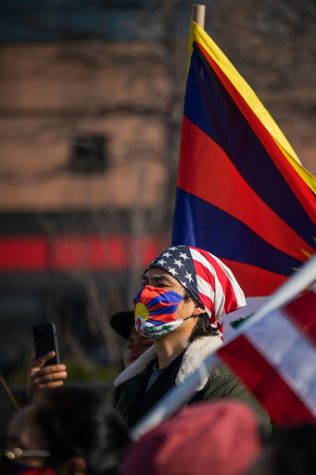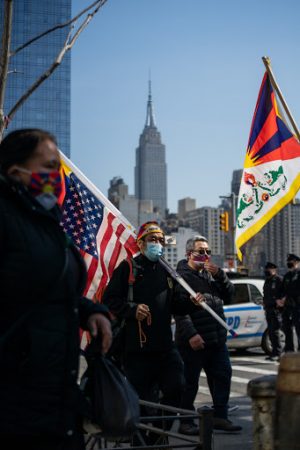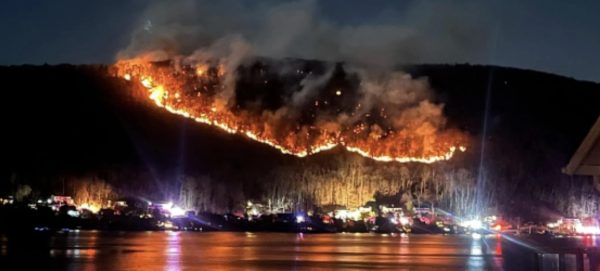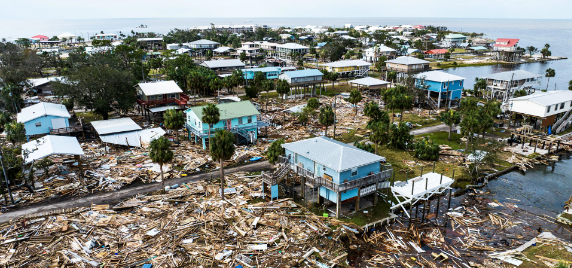62nd Anniversary of the 1959 Tibetan Uprising Day

On March 10th, Tibetan women, men, and children flooded the streets in a roar against the unlawful occupation of their homeland Tibet and the authoritarian rule of the Chinese government.
Deep in the foothills of the Himalayas, hundreds of thousands of Tibetans attempted escaping persecution by Communist China. Fleeing to India, Nepal, and Bhutan, in 1959, Tibetans made the journey into exile and sought refuge in these neighboring countries. However, many did not survive the obstacles of the journey and Tibet’s treacherous terrain.
This vast landlocked region in central Asia, called Tibet, was a sovereign country before China’s invasion in 1950. Then, China’s leading party was the People’s Liberation Army (PLA), who had entered Tibet’s northern region and began its occupation. Being an independent Buddhist nation in the Himalayas, Tibet had little contact with the rest of the world. It existed as a rich cultural storehouse of the Mahayana and Vajrayana teachings of Buddhism. Religion is a unifying theme among the Tibetans, as is their language, literature, art, and world view developed by living at high altitudes, under harsh environments.
By 1951, Tibetans were forced to sign the 17-Point Agreement imposed by the Chinese Government. And by the year 1958, China had proved that they had no intention of preserving Tibetan autonomy. To this day, Tibetans are still fighting for basic rights such as the freedom to learn and speak their language, practice their religion, and live freely in their own country.

“While Tibet has always been ethnically, culturally, linguistically as well as religiously different from China, even having their own empire, currency, and political affairs. Despite all of this, China had always claimed control of Tibet as part of China,” Tenzin Jorden addressed. The Becton senior takes pride in being Tibetan and solicits that the actions of the Chinese government are not isolated. He specified “The claims made by the Chinese government have proven to be very fabricated and contradictory. You can see from the treatment that other groups such as Inner Mongolians and Uyghurs face under Chinese rule. The Mongolian people in Inner Mongolia, Uyghurs in East Turkestan, and Tibetans in the Tibetan autonomous region are completely depopulated and have become a minority in their own regions.” Tibet is one of many areas impacted by the atrocities that the Chinese Communist regime commits. The government sees any form of religion or ethnic differentiation as acts of separatism and is deemed a threat. Due to this, China is the only country in the entire world to consider the Dalai Lama, the spiritual and religious leader of the Tibetan people, a terrorist.
His Holiness the Dalai Lama, an individual said to be an incarnation of the Buddha of Compassion, was both the political and spiritual leader of Tibet. Although the Dalai Lama has since abdicated his political authority, he remains the spiritual and religious leader of the Tibetan people. His Holiness is known for advocating for non-violence and compassion and is a symbol of hope for the Tibetan people and all his followers around the globe.
The current Dalai Lama, the 14th, was only 24 years old when Tibet was invaded in 1959. On March 10th, 1959, Chinese army officials sent an invitation to the Dalai Lama, to see a theatrical performance. However, under the conditions in the invitation, His Holiness was not allowed to be accompanied by any of his bodyguards or other personnel. The Tibetan people feared that the invitation was just a plot to kidnap and execute him. As a result, 300,000 loyal Tibetans surrounded the Norbulingka palace, forming a human sea of protection. This mobilization forced His Holiness the Dalai Lama to turn down the army leader’s invitation. Instead, he was held a prisoner of devotion. From 1950 to 1959, years of turmoil resulted in the complete overthrow of the Tibetan Government and the exile of the Dalai Lama and approximately 100,000 Tibetans.
Since the invasion, over a million Tibetans have been killed at the hands of the Chinese government. Additionally, the Chinese policy of resettlement of Han Chinese into Tibet has made Tibetans a minority in their own country. Compared to pre-1959, only 1 out of 20 monks are still allowed to practice, under the government’s watch. More than 6,000 monasteries and shrines have been destroyed. Famines have appeared for the first time in recorded history, natural resources are devastated, and wildlife is depleted to extinction. Tibetan culture comes close to being eradicated.

Peaceful demonstrations, speeches, writings, or any form of protests by nuns, monks, and Tibetan lay people have resulted in deaths and thousands of arrests. These political prisoners are tortured and held in substandard conditions, with little hope of justice.
Also known as ‘Tibetan Martyrs’ Day’, March 10th is devoted to shedding light on the brave men and women who displayed their patriotism and heroism. Thousands of Tibetans were brutally beaten and murdered, monks and nuns were arrested and executed, families were torn apart, children were left orphaned, in addition, monasteries and temples were looted and destroyed. On March 12, 1959, two days after the National Uprising Day, thousands of women gathered on the ground called Dri-bu-Yul-Khai Thang in front of the Potala Palace in Lhasa. This demonstration marks Tibetan Women’s Uprising Day. March 12th was the catalyst that sparked the Tibetan Women’s Movement for independence.
However, the countries internationally continue to disregard the rampant genocide and exploitation of Tibet over the last seven decades. Becton’s AP History teacher Bill Carr explained “..the international political community will tend to ignore the issue. Foreign policy is rarely political, it is always economic.” Many nations have reconciled with China for diplomatic and financial reasons. In the process, Tibetans have continued to suffer and face persecution in Tibet.
Despite being stripped of virtually all freedoms of their identity, Tibetans have continued to preserve their rich and diverse culture and traditions. The struggle is still not over yet. Tibetans are still fighting for basic human rights, such as the freedom to practice their religion, follow their own religious leaders, learn their own language in schools, being able to openly speak Tibetan, and live freely in their own country.
Tibetans, and people who support their cause, pay tribute to all those who have sacrificed their lives for Tibet’s struggle. This day is a testament to all those who have and continue to suffer under the oppressive Chinese government. So we march. Free Tibet!
Tenzin is excited to be a part of the Cat’s Eye View staff for her sophomore year. She is a hardworking and determined student. Tenzin is a full-year...












